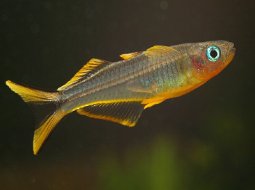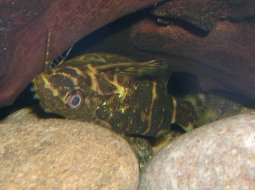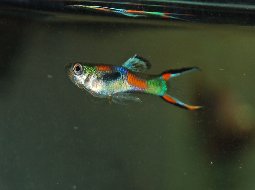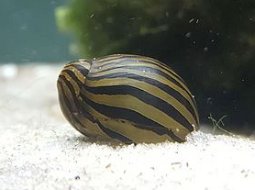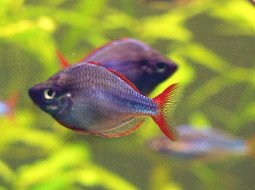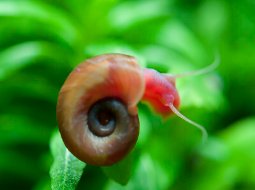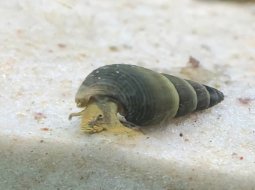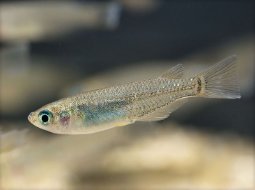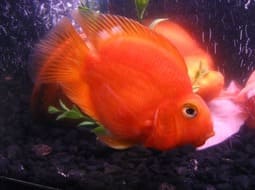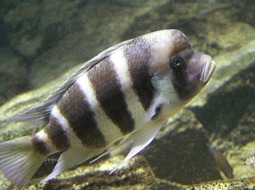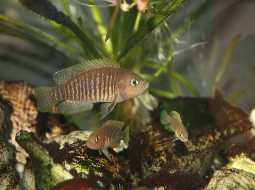
Loading Aqualapp ...
Care and Compatibility of Princess of Burundi Cichlid - Neolamprologus brichardi
Introduction
The Princess of Burundi Cichlid (Neolamprologus brichardi) is native to the freshwater lakes of Lake Tanganyika and Lake Malawi in East Africa. It has an elongated and slender body, with coloration that varies depending on gender and age. Males usually have more intense colors and longer fins than females.
Behavior
The Princess of Burundi Cichlid (Neolamprologus brichardi) is a dwarf cichlid known for its beautiful color pattern and interesting behavior. It is a peaceful and social fish that is often found in groups or colonies in its natural habitat.
Sexual Dimorphism
Sexual dimorphism in Neolamprologus brichardi is minimal and difficult to distinguish. Both males and females have a similar appearance.
Reproduction
The reproduction of the Princess of Burundi Cichlid is fascinating. They are monogamous fish and form stable pairs. They build nests in the substrate and cooperatively care for their offspring. The females deposit their eggs in the nest, and both the male and female take turns protecting the eggs and caring for the fry until they are able to swim and feed on their own.
Aquarium Conditions
Neolamprologus brichardi, commonly known as the Princess of Burundi cichlid, requires an aquarium with good water circulation and hiding areas. It prefers alkaline water and a warm temperature. Aquarium décor should include stacked rocks to form structures and caves. Maintaining water quality is crucial and providing a balanced diet.
Feeding
When it comes to feeding, the Princess of Burundi Cichlid is an omnivore and primarily feeds on small crustaceans, insects, and algae in its natural habitat. In the aquarium, it can be fed high-quality commercial flakes or pellets, supplemented with live or frozen foods such as brine shrimp, daphnia, or mosquito larvae.
Complexity
Caring for Neolamprologus brichardi can be moderately challenging. They are territorial fish and need enough space to form social hierarchies. It's recommended to keep them in a group of at least six individuals and in an African cichlid tank. They are omnivores and accept a variety of foods.
In case you need more help, or if you want to know into any topic related to the Neolamprologus brichardi (Princess of Burundi Cichlid) and even any other species you can use the forums to ask what you need.
To do an analysis more detailed about coexistence and behavior of Neolamprologus brichardi (Princess of Burundi Cichlid) use the Aquarium simulation tool, if you do this you can test different ways to combine the Princess of Burundi Cichlid with other fishes giving the dimensions and space on you aquarium, on this way you can known the optimal configuration for keep the fishes that you want.
You can also find out the 23 species compatible with the Neolamprologus brichardi (Princess of Burundi Cichlid) can live together.
Note: The parameters of the water such as PH and temperature are also used to calculate the compatibility of the species.
Compatible species (23)
Compatible (8 Species)
Compatible without any restriction
Recomendado tener varios ejemplares de su misma especie.
Similar Sizes (5 Species)
They can coexist if they are the same size or very similar sizes, it does not work in all cases, there may be exceptions.
With Reservation (1 Species)
Las especies territoriales por lo general pueden convivir con especies protegidas con coraza, ya que no pueden hacerles daño por su dura piel, lo que si hay que tener en cuenta es tener un acuario con dimensiones favorables para que cada pez pueda delimitar un territorio, ya que la mayoría de peces acorazados son también peces de fondo y les gusta estar buscando lugares donde ocultarse.
Considerable size difference (6 Species)
They can coexist while they are similar in size or the size difference is not very abysmal, since as the fish grows it increases the chances of eating its partner that did not grow much.
Compatible if space is enough (3 Species)
They can coexist together if the aquarium they share is large and spacious enough for both species to feel good, as some fish may attack others to feel that they have little space and try to eliminate the competition.
Princess of Burundi Cichlid
Neolamprologus brichardi
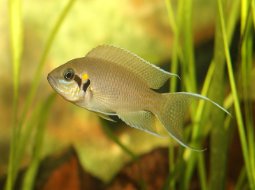
- Ph: 8 - 9
- Temperature (c°): 22 - 26
- Measures: 10 cm
- Aquarium Capacity:
15 Liters - 4 Gallons - Alimentación: Carnivores
- Colores: Blue, White
- Comportamiento: Peaceful, Shoal, Territorial
- Habitad: African
- Preferencias del Acuario: Caves, Rocks
- Tamaño: Medium
- Taxonomía: Cichlids, Fish, Mbunas
- Tipo de Agua: Sweet water, Tropical waters
- Velocidad de nado o movimiento: Normal
- Zona de Nado: Aquarium background, Swim in the middle of the aquarium

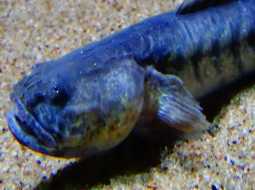
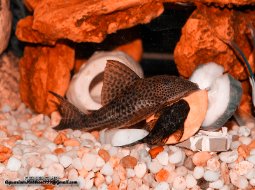
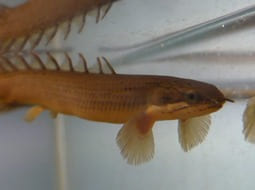
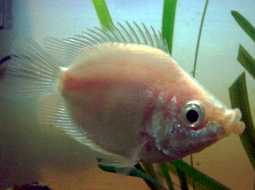
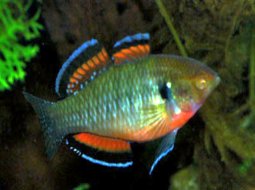
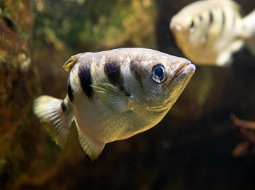
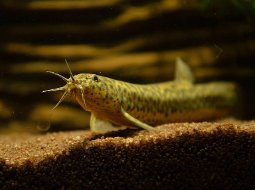
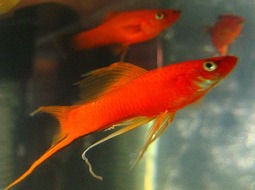
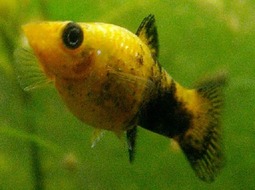
.jpg)
